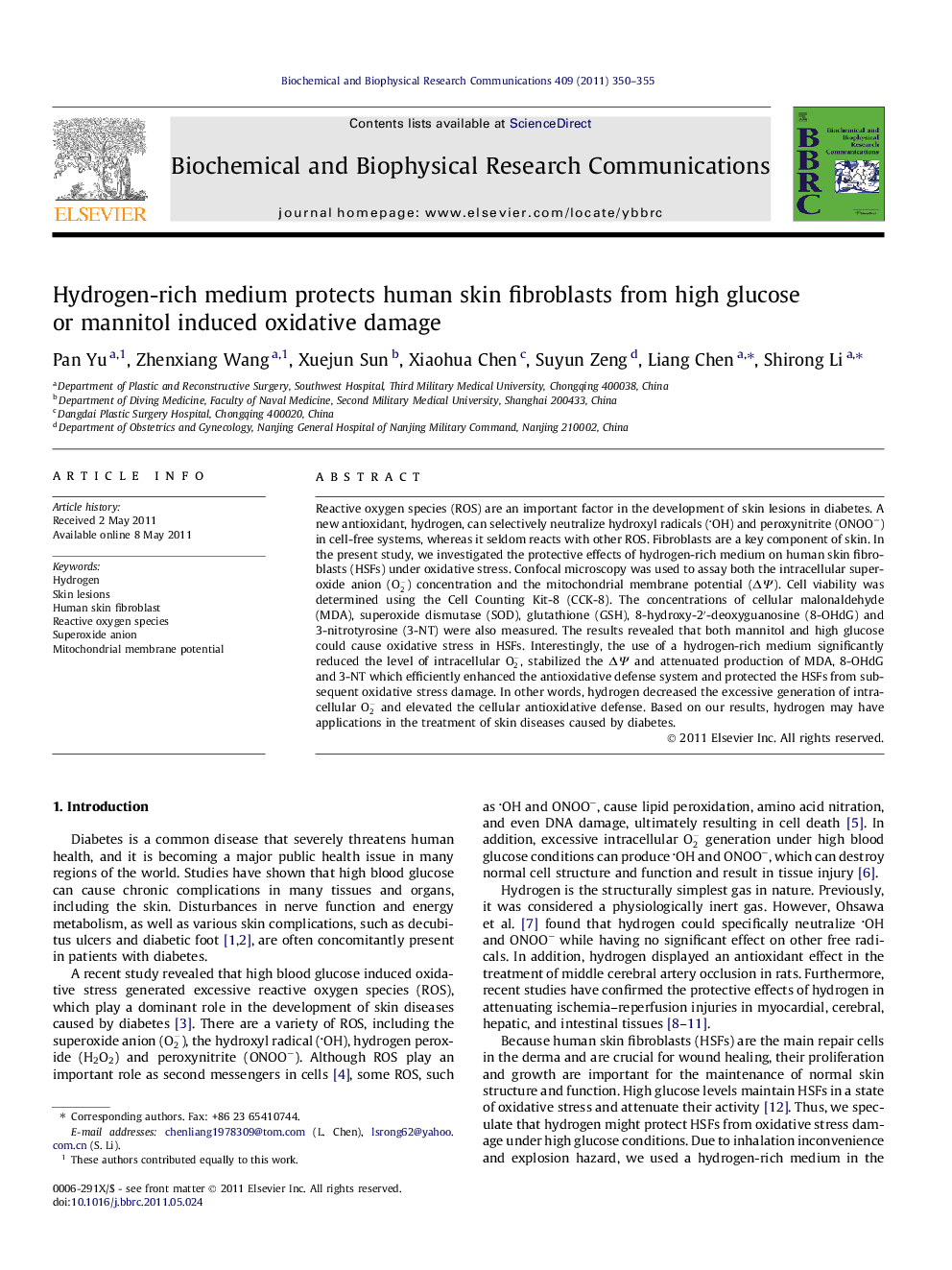| Article ID | Journal | Published Year | Pages | File Type |
|---|---|---|---|---|
| 1930467 | Biochemical and Biophysical Research Communications | 2011 | 6 Pages |
Reactive oxygen species (ROS) are an important factor in the development of skin lesions in diabetes. A new antioxidant, hydrogen, can selectively neutralize hydroxyl radicals (OH) and peroxynitrite (ONOO−) in cell-free systems, whereas it seldom reacts with other ROS. Fibroblasts are a key component of skin. In the present study, we investigated the protective effects of hydrogen-rich medium on human skin fibroblasts (HSFs) under oxidative stress. Confocal microscopy was used to assay both the intracellular superoxide anion (O2-) concentration and the mitochondrial membrane potential (ΔΨ ). Cell viability was determined using the Cell Counting Kit-8 (CCK-8). The concentrations of cellular malonaldehyde (MDA), superoxide dismutase (SOD), glutathione (GSH), 8-hydroxy-2′-deoxyguanosine (8-OHdG) and 3-nitrotyrosine (3-NT) were also measured. The results revealed that both mannitol and high glucose could cause oxidative stress in HSFs. Interestingly, the use of a hydrogen-rich medium significantly reduced the level of intracellular O2-, stabilized the ΔΨ and attenuated production of MDA, 8-OHdG and 3-NT which efficiently enhanced the antioxidative defense system and protected the HSFs from subsequent oxidative stress damage. In other words, hydrogen decreased the excessive generation of intracellular O2- and elevated the cellular antioxidative defense. Based on our results, hydrogen may have applications in the treatment of skin diseases caused by diabetes.
► Both mannitol and high glucose could cause oxidative stress damage in human skin fibroblasts (HSFs). ► The application of hydrogen-rich medium significantly reduced the intracellular O2- in HSFs treated with high glucose or mannitol. ► The hydrogen-rich medium could stabilize the mitochondrial membrane potential (ΔΨ) of HSFs after treatment with high glucose or mannitol. ► The hydrogen-rich medium attenuated the MDA, 8-OHdG and 3-NT products and increased SOD and GSH levels in the HSFs treated with high glucose or mannitol.
